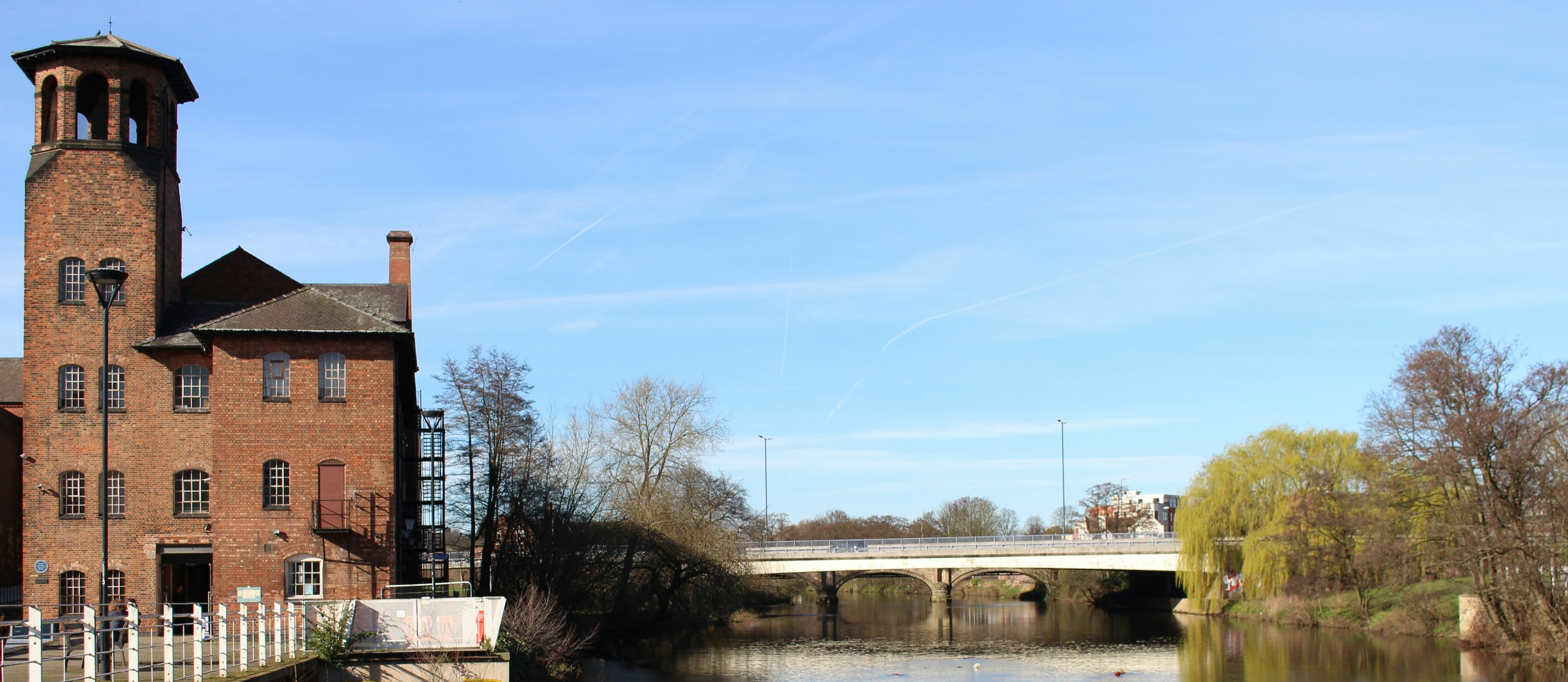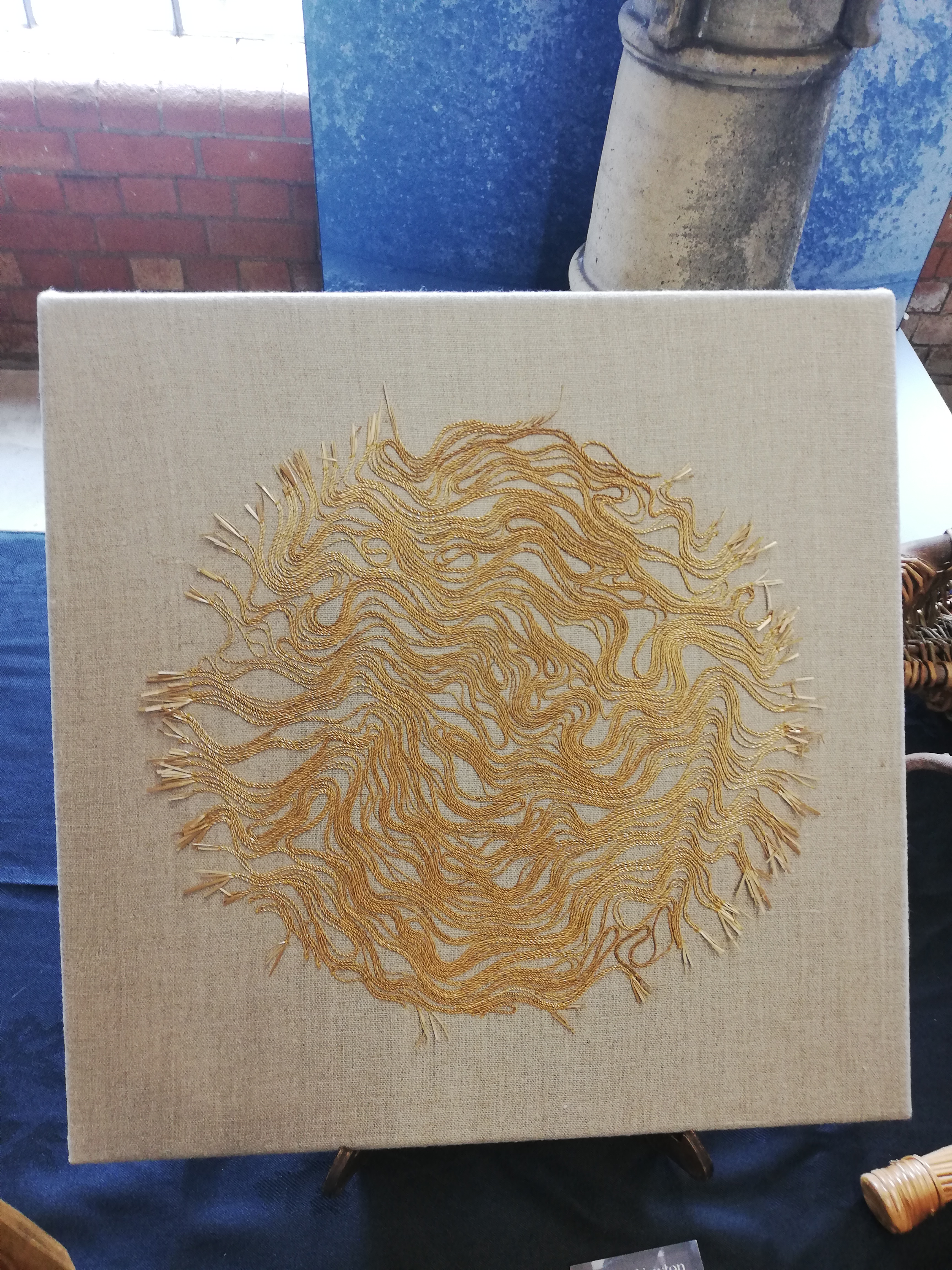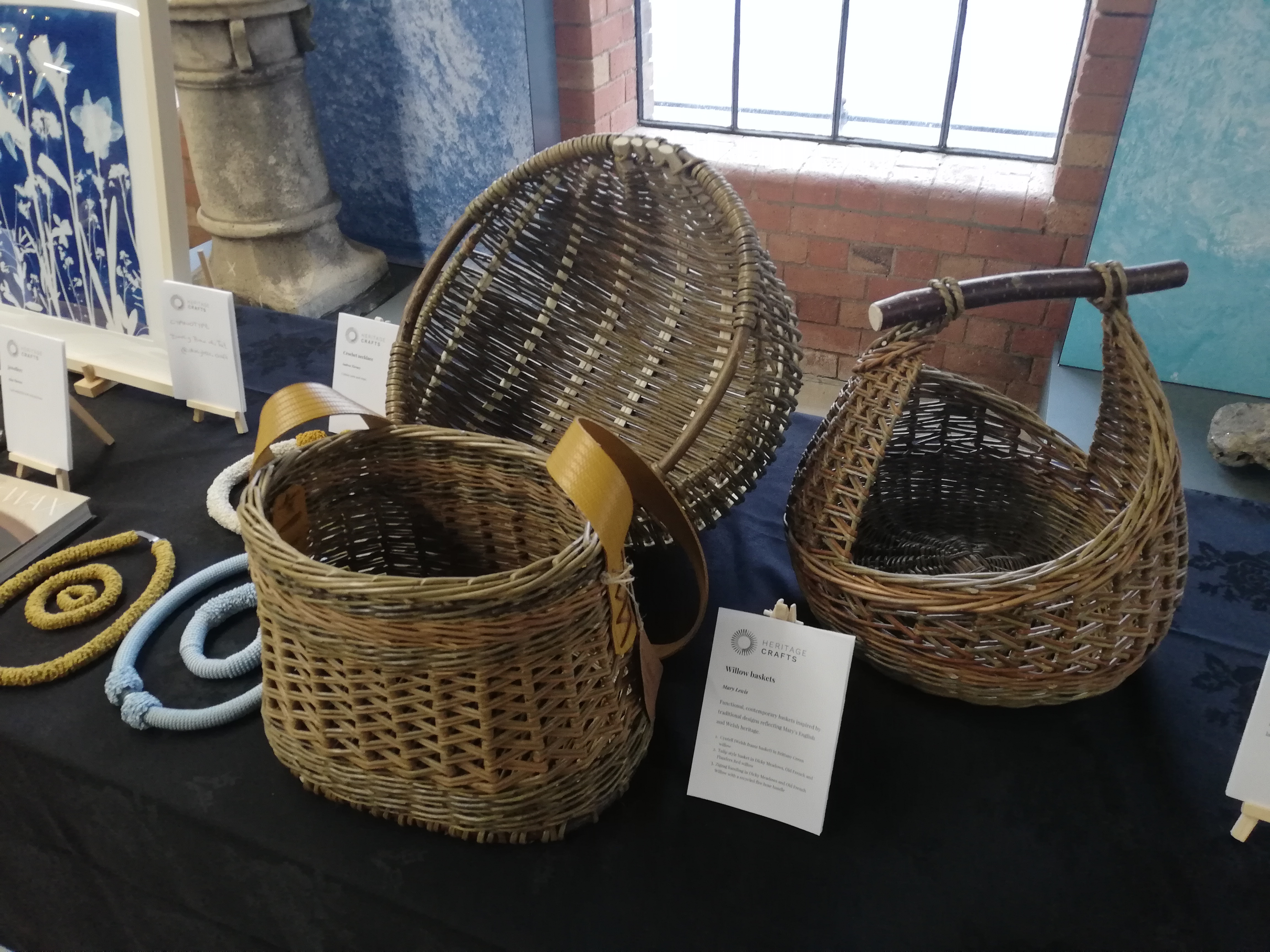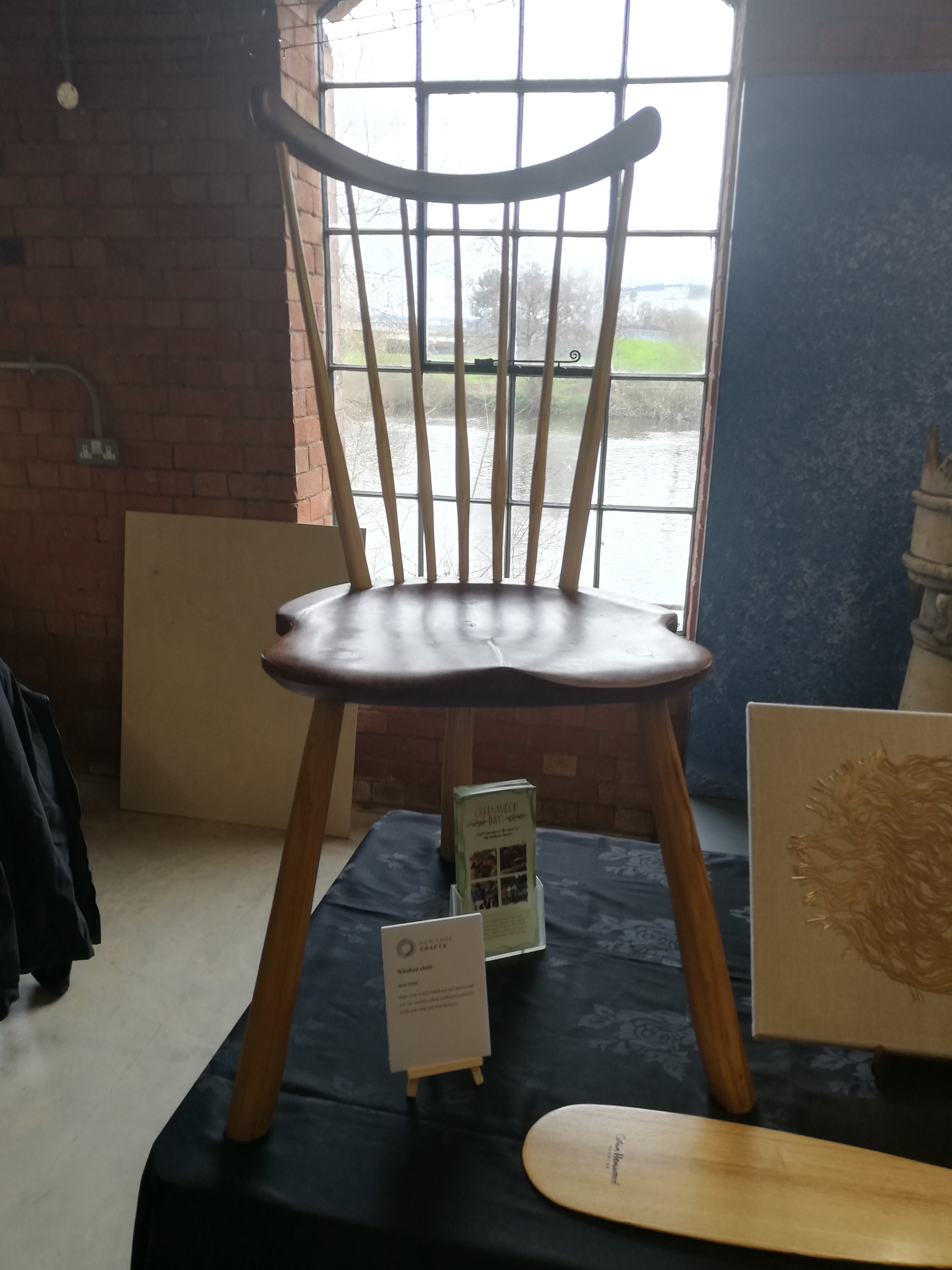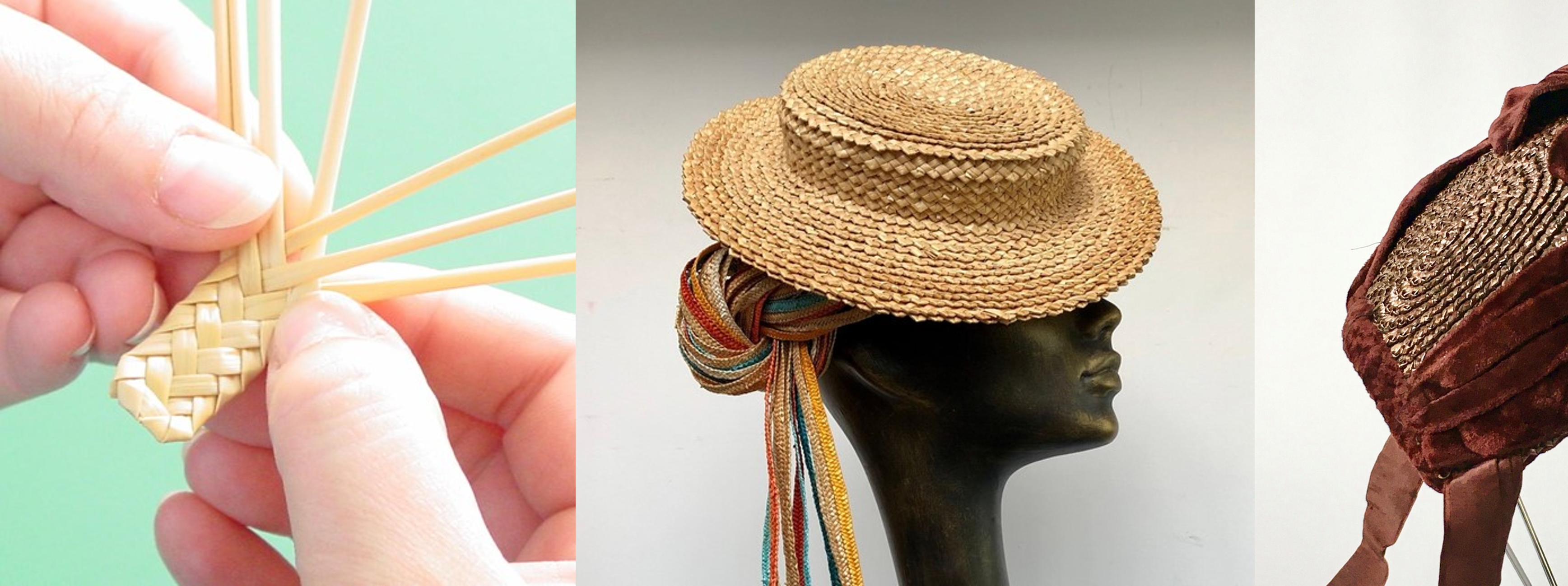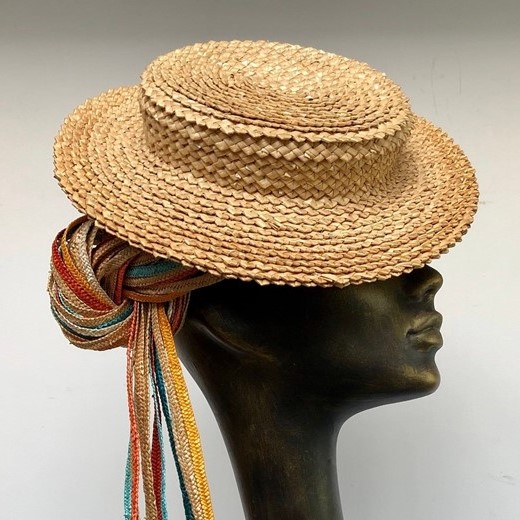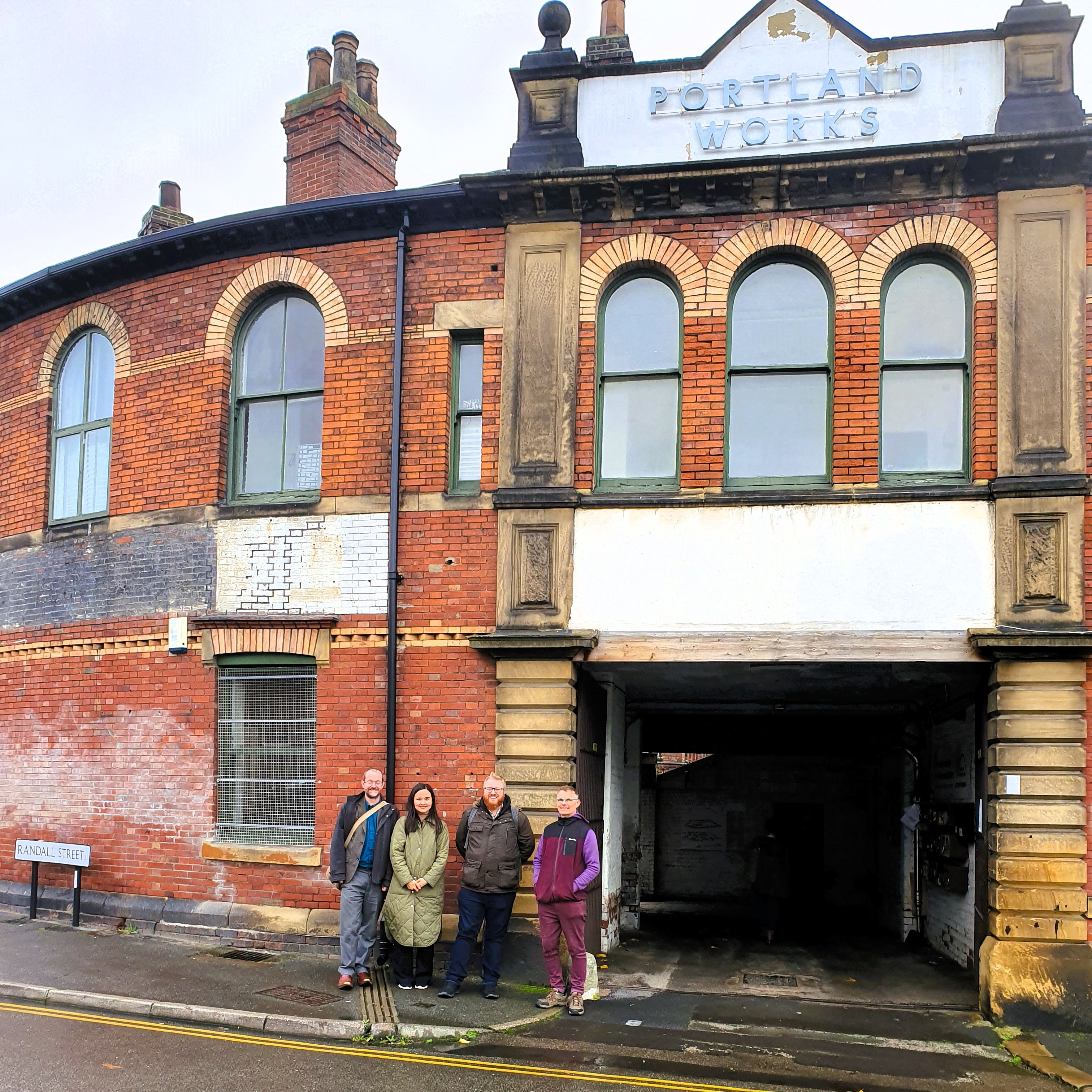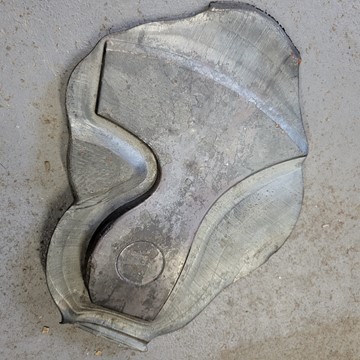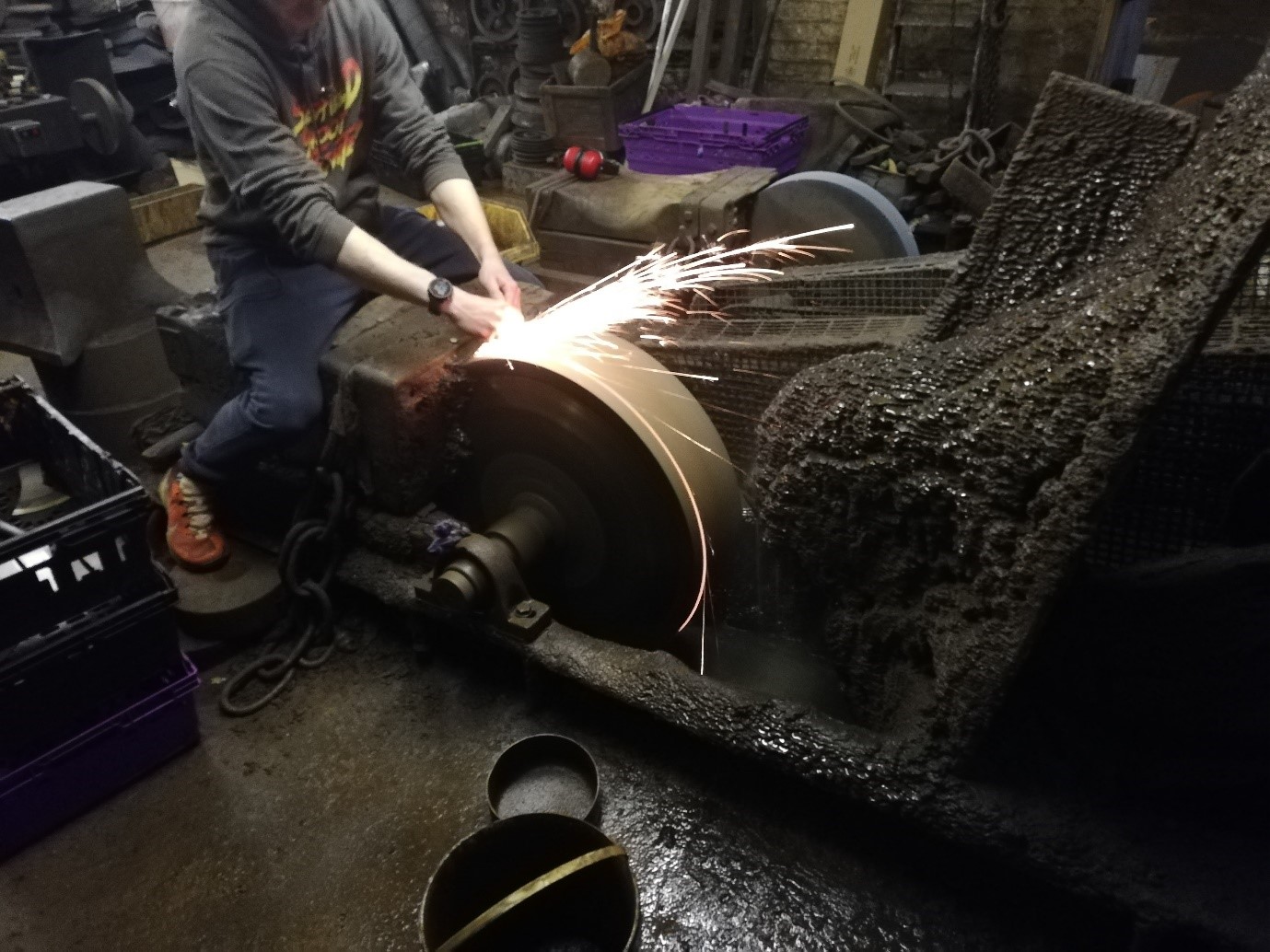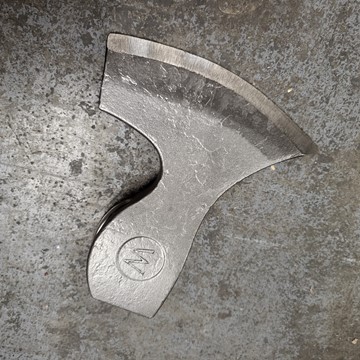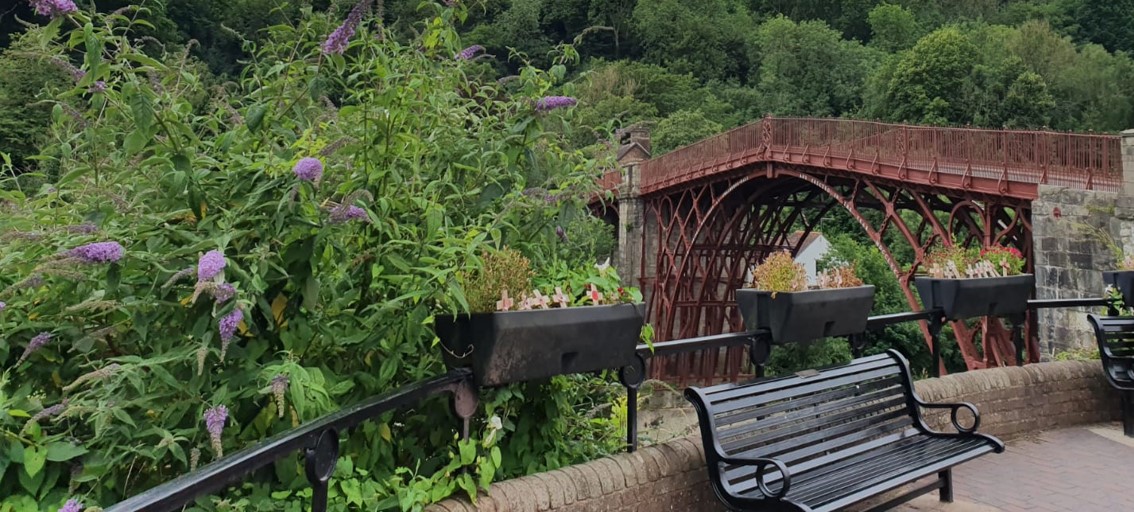Blog posts
16 April 2024
Gaby Harrison, Research Assistant
Getting up at five o’clock on a Saturday morning to go to Derby, does not sound all that much fun but I did it all with gladness because I had been kindly invited to Heritage Crafts’ big annual meet up at Museum of Making. In celebration of the Government’s decision to ratify the 2003 UNESCO Convention for the Safeguarding of Intangible Cultural Heritage (read more about this here), the theme of the day was “Culture in the Making”.
The day kicked off with our old friend Daniel Carpenter (one of this project’s partners) explaining how Heritage Crafts have long campaigned for this policy change and how it will affect their advocacy work in the future. Daniel also reiterated some of his points from their response to the Convention, such as how important it is to capture the viability of ICH during the initial stage of creating a UK inventory of ICH, which seems like common sense considering how much time this will save when it comes to safeguarding stage of implementation.
Lord Parkinson of Whitley Bay (Parliamentary Under Secretary of State for Arts and Heritage and DCMS Lords Minister) took to the mic, paying homage to Daniel and Heritage Crafts for all their advice and hard work on this project. Lord Parkinson echoed some of the key hopes Heritage Crafts have for the implementation of the Convention such as it bring new communities together through partnership working, and that it will take the bottom-up approach recommended by UNESCO. Lord Parkinson announced he will be heading to Paris next month to officially apply for ratification of the Convention, for which he received a round of applause.
Next, we were treated to a couple of Members of the Order of the British Empire, Jay Blades from wildly popular BBC show, the Repair Shop and academic and textile artist, Rose Sinclair. He answered Rose’s questions with his trademark easy-going manner, and explained how craft could do so much in working class communities as a source of income and pride. He spoke of the confidence boosting qualities of craft, particularly for young people. Questions from the audience also related to the youngsters, where it was established that they have a distinct interest in craft, but the apprenticeship system needs reform if we want the heritage crafts sector to profit from this interest.
Andrea Chapell of ACME ATELIER is an amazing kiltmaker. Hearing how her craft proved that even though her work is bespoke it can still represent and include the community. Her Moray Project has seen the production of kilts that represent various industries that support the local communities, both in their aesthetics and their production. We got to see some of her makes up close, and I must say despite hearing how curated and minutely designed they are, they are completely functional and temptingly wearable.
Next, we were astounded by puppeteer Oliver Hymans’ ability to bring a mundane sheet of newspaper to life, but it was his talk that really made an impression on me. Oliver has received grants for his work making the puppets, but for him it’s not just about the making; without the performance element, there is no need for the craft. Not always, but usually, craft produces something practical, something designed to be used, some have even called for this to be the definition of craft. I started think that perhaps the ICH of craft is two-fold, it is the activity of making, and it is the activity of using.
Over the lunch break I wandered around the gallery of crafts, beautiful handmade chairs, with tiny needlepoint stars. I tried, in vain, to play one of Chris Tummings’ bamboo saxophones. Then the afternoon session began with a very thoughtful talk from craftsperson Imogen Bright Moon, entreating us to tread softly when working with marginalised communities. I was particularly struck by her thoughts on images, how often the images of marginalised communities, come from outside that community and therefore depict external narrative of said groups. This is something I will take with me and consider when selecting images for our website in future.
David Clarke, Co-Chair of Heritage Crafts gave us a very informative little talk on the great work done so far by the organisation, and what they have planned for the future. Heritage Crafts have received National Lottery funding for a new project, Shaping a Resilient Future, and their Awards and Bursaries scheme has extended its reach year on year. Daahir Mohamed, Lime Plasterer gave us the real-life proof of the effectiveness of these schemes. With Heritage Craft’s funding he was able to complete the William Morris Fellowship and since then he has set up his own business, Bristol Heritage Skills, which trains up new people in the sector. It all felt very promising.
Then we ended proceedings with fabulous variety of performances from Chris Tummings (bamboo sax), Lawrence Dodd (lute) and Nicholas Konradsen (smallpipe) and Oliver Hymans. Oliver told us that the best puppets are made by those who know how to work them, they understand what is needed from the material. Similarly, during his smallpipe performance, Nicholas was getting ready to play his next piece and his smallpipe, let out a note by itself, almost like the strange creature had breathed and then I overheard someone say, ‘It plays itself!’
But the smallpipe can’t play itself, for the handcrafted object to live, they have to be used. I have come away from Derby with a new understanding of how the various forms of ICH are reliant on one another.

29 February 2024
Today is the day…the last day to have your say on the Government’s proposal to ratify the 2003 UNESCO Convention for the Safeguarding of Intangible Cultural Heritage. In our last blog we explained what this meant for the heritage crafts sector and how can submit your own responses. Since then, we have attended a roundtable led by the Department for Digital, Culture, Media and Sport (DCMS), where we and the other interested parties were able to offer our opinions. DCMS hoped that their understanding of traditional crafts and how to categorise them would be deepened and developed through this discussion. It was interesting to hear such a passionate and informed debate over how traditional crafts should be defined, how do quantify and describe the history of a practice?
DCMS proposes that the implementation of the Convention should be collaborative and represent and include the practitioners of ICH as much as possible, and we very much agree with this bottom-up approach. The initial inventory phase will take a regional approach, with each of the devolved nations taking control of their own list and there is the option to submit more than one version of each craft. Our research project is built on the foundation that heritage crafts are an inherently regional practice, and we believe that these considerations put forward by DCMS have the potential to reflect the regional differences in craft practice.
If you would to know about our response, please do get in touch with usLink opens in a new window.
8 January 2024
Master Mail Maker, Nick Checksfield kindly gave us permission to use his photographs. Find out more about his work here.
Forget Christmas, over the break our team was celebrating the UK Government’s announcement that they intend to ratify the 2003 UNESCO Convention for the Safeguarding of Intangible Cultural Heritage (ICH)!
For those who don’t know, essentially ICH describes aspects of heritage that cannot be touched, UNESCO says there are five main forms of ICH:
(a) oral traditions and expressions, including language as a vehicle of the intangible cultural heritage;
(b) performing arts;
(c) social practices, rituals and festive events;
(d) knowledge and practices concerning nature and the universe;
And mostly importantly to us:
(e) traditional craftsmanship!
This is what we and our partners have been pushing for and we are excited to see how it will impact the heritage crafts sector. The 2003 Convention means the Government will have a formal obligation to collect data on ICH and therefore preserve it. For us, it means we have ideological backing from Government for our work. Up until now we have been encouraging councils to get on board with our project by saying that this policy move was imminent, and if they take up our recommendations, they could be the trailblazer for council-supported heritage crafts. Now, that this is could become part of their daily work we can focus more on the recommendations for supporting craftspeople, rather than convincing them that ICH is a worthy investment in the first place.
Interestingly, the only big newspaper to report on this was The Guardian. A short piece published on the 23rd December, so the focus was on the Christmas based traditions such as carol singing and pantomimes that could be protected by the new policy. Arts and Heritage Minister Lord Parkinson of Whitley Bay says that with the policy, the Government ‘will be able to celebrate treasured traditions from every corner of the UK, support the people who practise them, and ensure they are passed down for future generations to enjoy’. To be sure, the 2003 UNESCO Convention has a particular emphasis on community collaboration, and this is echoed in the Government’s plans for the implementation of the convention. Proving this, all three of the devolved nations have come out in support of this policy change, providing quotes for the article.
Attached to the article there are documents offering further information on the specifics of the Government’s plan for ICH, some of the most useful information can be found on the document attached to the article named 2003 Convention for the Safeguarding of the Intangible Cultural Heritage - English survey. Here, they explain that they will be overseeing the compiling of UK Inventory of Intangible Cultural Heritage, which will then be concentrated to provide a more detailed list, which is then given to UNESCO.
The UK has a deeply regional culture and of course, parts of one another’s culture have migrated across county and country borders and have been built upon and augmented to create a new form of culture deserving of attention alone. The Government’s suggested approach allows for us to create an inventory that reflects our culture’s plurality. Hopefully, the detail is not missed and signposted for those interested in learning more about our culture. This handover of this list to UNESCO will not happen for ‘at least the first few years’ according to this survey.
Interestingly, the DCMS are suggesting that two new categories of ICH be added to the five listed at the top of this article. These are traditional games and sports and culinary traditions/knowledge. Some of these are dependent on other forms of ICH, for example cricket cannot exist and the endangered craft of cricket bat making. If these are agreed upon it would be interesting to see what parts of our culture are nominated to be part of these categories. The DCMS acknowledge that ICH can be a little abstract, so the inclination would be to simplify and reduce this list rather than add more. However, with ICH the opposite is the case, the more we can show that ICH is part of our lives every day, everywhere, the more people will support the movement to protect it. So, in this case we think the addition of these categories will be helpful. However, we must acknowledge that these two forms of ICH are part of two of the largest money-makers in the UK, sport and hospitality, and we hope the focus remains on those elements that require protection and promotion.
We are invited to provide our opinions on the Government’s policy via there website here, where you can vote and provide comments on various aspects of their plan until the end of February. Please do get involved and have your say.
2 January 2024
Straw crafter, Veronica Main MBE, kindly gave us permission to use her photographs. Find out more about her work here.
Heritage Crafts’ Red List of Endangered Crafts Link opens in a new windowcollects data on the current heritage craft practice across the UK and then ranks those which are most at risk of being lost. The Red List is the first of its kind in the UK and was established to ‘act as a call to action’ and ‘mark the start of long-term monitoring of heritage craft viability’. We work closely with Heritage Crafts and the Red List has been very useful in our research and as tool for communicating with those outside the craft world, in this blogpost we explain the successes and utility of the Red List.
Taking inspiration from animal conservation, they use the terms “endangered”, “critically endangered” and “extinct”. Applying words widely known and associated with physical loss to intangible cultural heritage was an inspired move. These words evoke a sense of great and urgent loss and the Red List has garnered much media attention. A wide array of media outlets have reported on the Red List from the BBCLink opens in a new window to Country LivingLink opens in a new window. There are some small differences in the reporting. For example, The Guardian’sLink opens in a new window strapline on the story reads ‘Skills may be lost for good due to ‘perfect storm’ of economic stresses, says heritage charity’. Many of the papers exalt craftspeople as ‘heritage heroes’ (Financial TimesLink opens in a new window) and the Daily MailLink opens in a new window has clear focus on traditions these makers uphold. Heritage crafts can be an emotive topic, dredging up nostalgic images of a bucolic lifestyle that appeal to those who feel out of step with today’s technology entrenched world.
It has been widely recognised in the sector that there is a distinct lack of measurement of heritage crafts, so it makes it very difficult to gather evidence to prove its value. The Crafts Council report How do we measure craftLink opens in a new window (June 2023) goes into greater detail on this issue. One of the major problems is how the government categorises industry based on the output, what is produced, rather than the skills that were used to produce them. This often means craftspeople have to be reductive about their abilities. For example, for a craftsperson who makes the majority of their income through workshops, does that make them an educator?
Heritage Crafts is committed to repeating the Red List every two years, providing the sector a set of data that can be used to make an accurate picture of current craft practice in the UK. The Red List can be used by Heritage Crafts to prove the need for more support for craftspeople, but also allows them to target the crafts most in need.
Impact on Research
We used the Red List to collate new data on the craft practice of regions across the UK, which provided us with comparable data on where the highest proportion of heritage crafts are being practiced. When combined with qualitative data we were able to work out where in the UK craft is being practiced but is not supported by local government, and these became our targets for our research, which we describe as ‘potential craft regions’.
Taking a step back, Heritage Craft’s Red List can be inspiration for the academic sector as a whole. They have taken data and created a system that is relatable and accessible for the general public. Culture and numbers can work together!
4 December 2023
The first step in this project was to identify successful craft regions and potential craft regions in the UK. Initially, we assumed that Sheffield would likely be one of these successful regions, known as the “Steel City”, we already knew that there were various heritage craft businesses working in the area. However, upon further investigation we found that Sheffield does have a distinct heritage craft culture but that it did not enjoy full support of the local authorities, although the local authorities have recently acknowledged the importance of heritage. Therefore, we decided it would be one our potential craft regions.
We organised this first official trip to Sheffield in order to get to know the local heritage stakeholders, those whose work might support our vision for a craft-supportive city. Three of our team [hyperlink to page] Innan, Gaby and Daniel, met with Dr Chris Corker, Lecturer in Management, University of York and local craftsperson and co-founder of Heritage Crafts, Robin Wood. Chris led us on a drizzly tour of the city where we learn about the Cathedral and its patchwork interior reflecting its long and varied history and the recently listed John Lewis building that stands empty, but defiant.
After a spot of lunch in local independent café, we headed to Portland Works, a beautifully industrial multi-use space that provides studios for craftspeople, who Chris works closely with.
Portland Works has a fantastic group of volunteers who work on renovating and preserving the building and we were kindly lent one of the rooms to hold our presentations in. First, Daniel told the group about the work of Heritage Crafts, giving much-needed background on what heritage crafts are and their value in the UK. Then Innan’s presented more tailored research and recommendations on how Sheffield can make the most out of their unique craft culture.
The response from our guests was overwhelmingly positive, they saw the inherent value of heritage crafts which was heartening for us to hear. We were also grateful to receive some useful information around the demography of Sheffield and the issues Sheffield has around its identity. Our audience were particularly interested in our offer to measure the impact of integrating craft into local policy, which is a key part of our project. Measuring the impact of heritage policy is notoriously difficult and time consuming, we hope out project will result in some tailored measurement tools that will not only prove the utility of heritage crafts, but could also have a wider impact on the sector.
After this Robin took us over for a surprise visit to his grinding workshop. Axes are not currently forged in the UK. Robin wants to change this, working with local suppliers, he has commissioned his own axes, complete with insignia which is then sharpened in his workshop. Watching the grinding was absolutely mesmerising and we were grateful for the opportunity to see some heritage crafts after only talking of it all day, a reminder for what we are working for.
We have returned to our respective desks invigorated and we are excited about our new relationship with this fab city!
June 2023
In June our team set off for Shropshire in the hope of finding people who care about heritage crafts, or at least can be persuaded to care. Beforehand, we had identified a few of these people and invited them to a meeting at Theatre Severn in Shrewsbury. This was to be our first meet in a potential craft region and it was quite hot; we were a little nervous. But looking out of the theatre window onto the River Severn emanated a sense of calmness which we gladly received.
From our team we had Innan, Daniel and Gaby and from the local community we had representatives from Shropshire Council, along with local craft practitioners and educators. After Daniel explained what heritage crafts are and what his charity Heritage Crafts does, Innan presented our research and recommendations. Then we ended with a very useful discussion with our audience. Here we heard all about the recently established the Shropshire Cultural Compact, a collaboration of cultural and non-cultural organisations with a shared vision of making culture a catalyst for change and an ambition to enhance Shropshire’s cultural offer. Facilitated by Shropshire Council, the Cultural Compact sees the value of including heritage crafts in their strategy and will feed back to their Board. It was interesting to hear of the various geographical issues that and could stop progress in developing a heritage crafts strategy. The county is very spread out which alongside the political boundaries would make bringing all the craftspeople together, as per our recommendation, rather difficult. However, we attested that these difficulties only make our recommendations more pertinent, the bringing together of craftspeople would support much-needed cohesion.
We left Severn Theatre feeling hopeful that Shropshire was a good choice for this project.
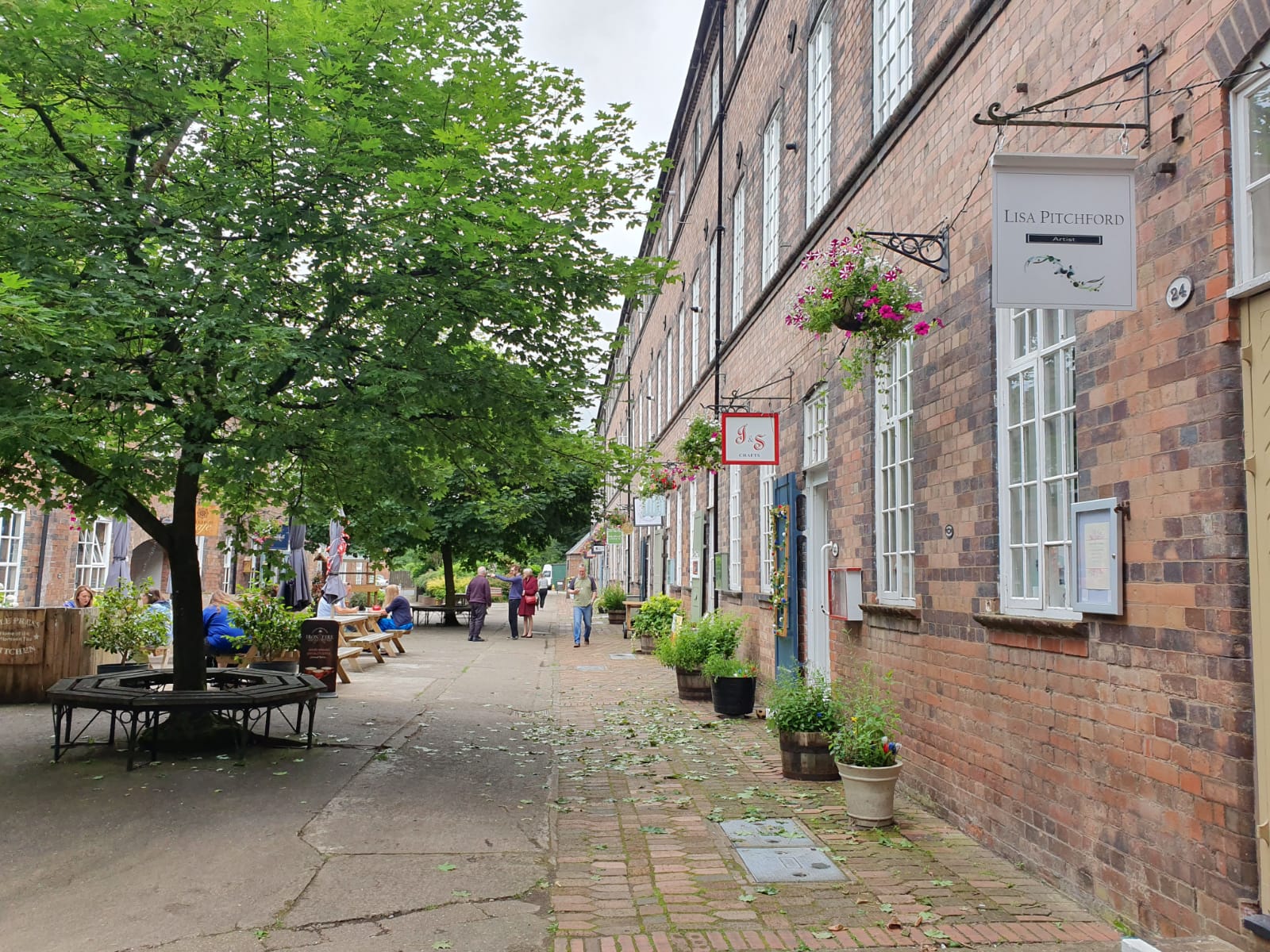
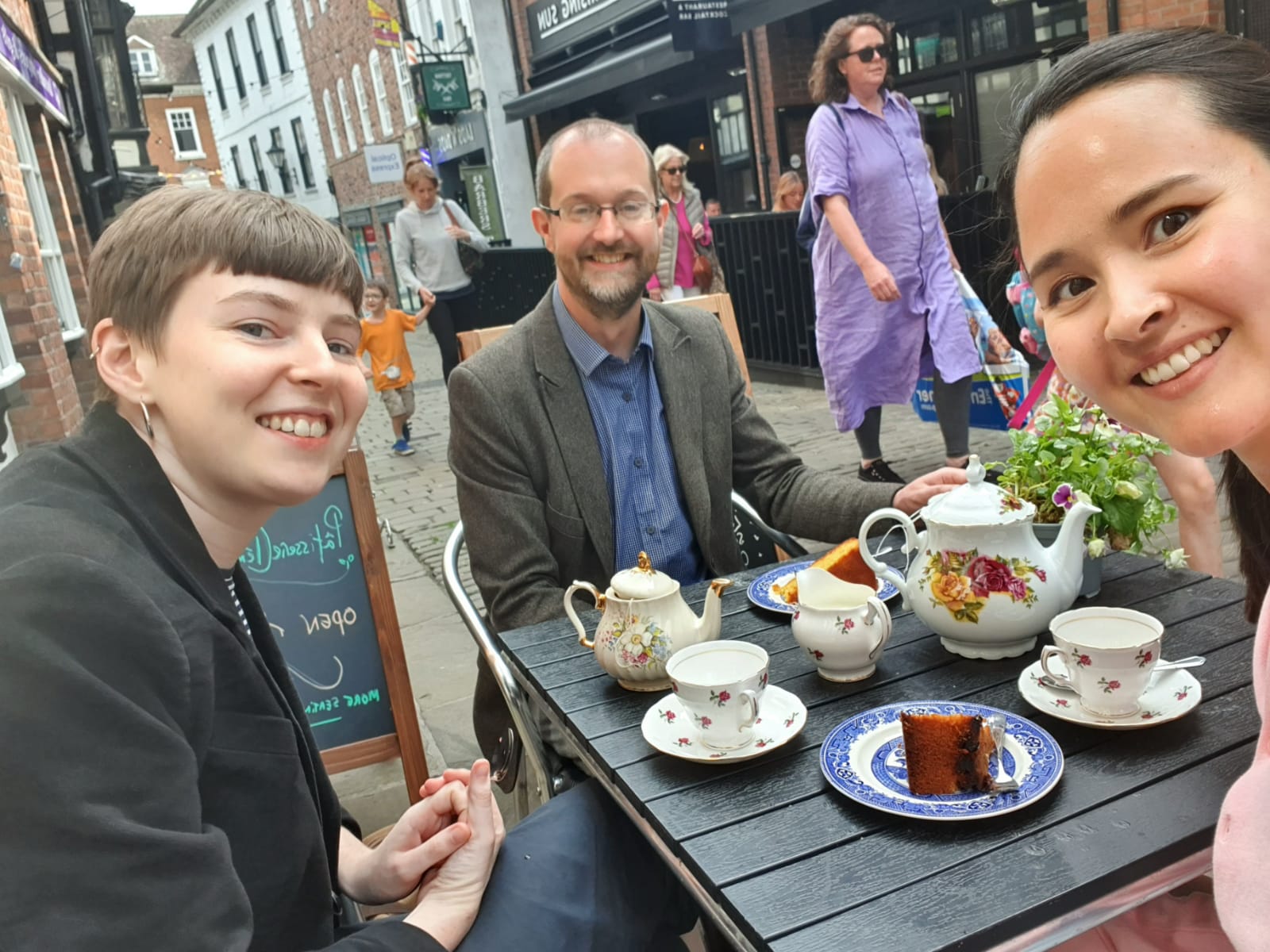
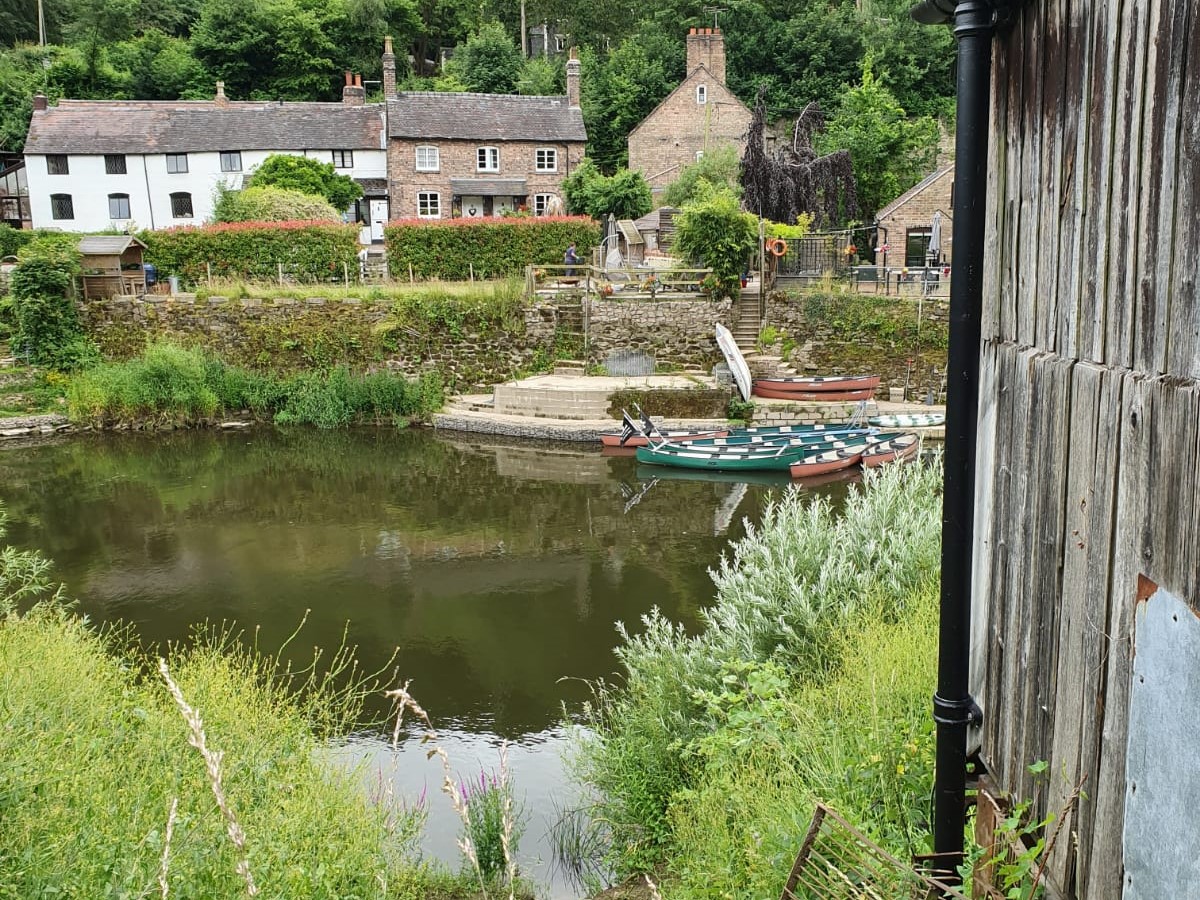
The next day was little drizzly, but we found comfort and shelter at the Ironbridge Gorge Museum café where we were to meet with representatives from Telford side of Shropshire. The museum strikes an interesting profile, large and imposing on top, while the glass first floor makes is much more recognisable as a museum.
We had lost Daniel to a prior engagement, but we gained Mary, the Endangered Crafts Manager of Heritage Crafts. Mary lives in Shropshire, and we are grateful for her support as one of our regional contacts. Those we met from Telford Council had already worked with Mary, so we were all on the same wavelength when it comes to heritage crafts. Funnily enough, they repeated the same concerns as the group the previous day regarding the large, separate geography of Shropshire. They also told us of the income divides in Shropshire, there are pockets of poverty in amongst more affluent areas and with craft products often having a higher price point, it is important that any plans would also benefit low-income residents. This led us onto a discussion about heritage skills in constructions and apprenticeships. We were about a landscape heritage apprenticeship in the area and we were reassured that this area has the infrastructure and imagination to enact our aims in an creative way.
In this meeting it was agreed that Shropshire’s heritage story lacks focus and perhaps heritage craft could meet this need. In order to achieve this, further collaboration with Shropshire Council would be necessary.
Ironbridge Gorge is a protected by UNESCO as a world heritage site and we met with their representative responsible for this. Being from UNESCO, they were very familiar with ICH and were keen to formalise their relationship with heritage craft. Built and natural heritage has a long history of being protected and loved in the UK, but our journey with ICH is just beginning. We spoke about how using our built and natural heritage to frame ICH such as heritage crafts would help the public “see” the need to safeguard it.
All in all, our first visit to one of our chosen potential regions went according to plan, we hope that the difficulties put forward by stakeholders act as a motivating factor for collaboration in the development of a heritage craft strategy.

